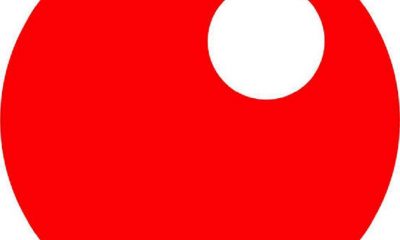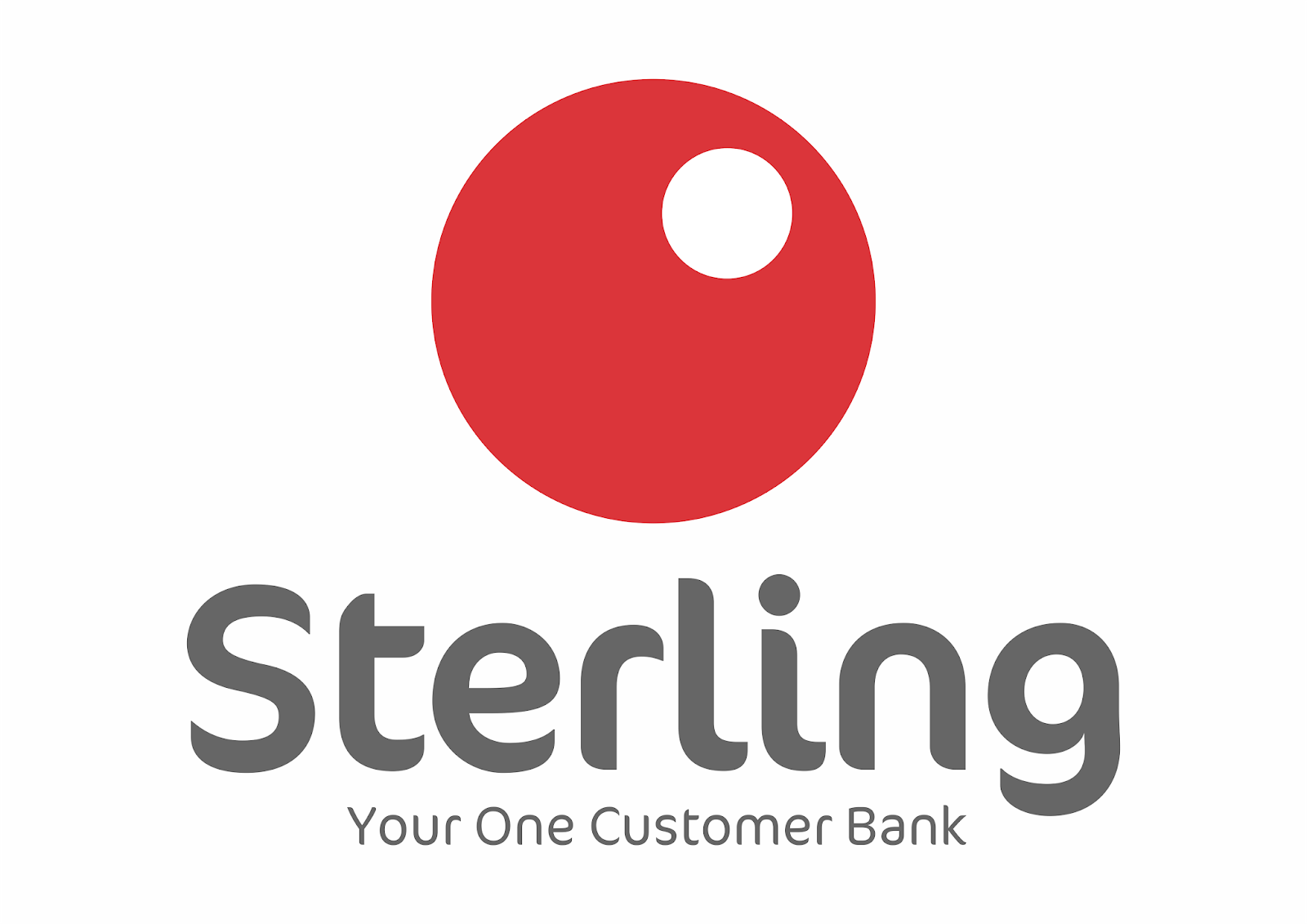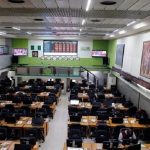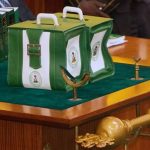Banking
Fitch Affirms Sterling Bank at ‘B-‘
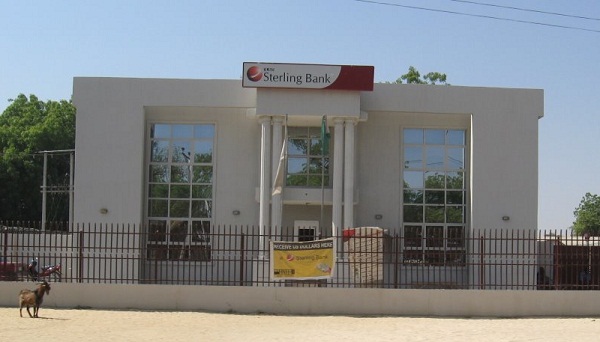
By Modupe Gbadeyanka
Sterling Bank Plc’s Long-Term Issuer Default Rating (IDR) has been affirmed by Fitch Ratings at ‘B-‘ as well as its National Long-Term Rating confirmed at ‘BBB-(nga)’ by the agency with the Outlook Stable.
A statement issued by the rating firm explained that Sterling Bank’s IDRs were driven by its standalone creditworthiness as defined by its Viability Rating (VR).
It noted that the VR is constrained by challenging operating conditions in Nigeria, the bank’s modest franchise and developing business model, weaknesses in its financial profile, and its higher risk appetite than peers.
These factors are counterbalanced by Sterling Bank’s coherent strategy, especially its business transformation initiatives, and strong management team.
Sterling Bank’s financial profile is characterised by high credit concentrations, variable earnings and profitability, modest capital buffers based on its risk profile, and its structurally weak funding and liquidity profile.
The lender has high exposure to the oil and gas sector, representing 43.2 percent of gross loans at end-9M17, mainly to mid-sized corporates.
Around 38 percent of the bank’s loans at end-9M17 were in foreign currency, exposing it to currency volatility.
Sterling Bank’s impaired loans ratio (based on IFRS) increased to 3.5% at end-9M17 from 1.7% at end-2016, arising mainly from the troubled oil and gas sector.
Based on prudential requirements (all loans that are 90 days overdue), Sterling Bank’s NPL ratio was 6.1% at end-9M17.
Fitch said it believes that the bank’s asset quality remains highly sensitive to loan concentrations by industry and obligor despite its impaired loans ratio and NPL ratio being below sector averages.
There is inherent instability in Sterling Bank’s funding base and 40% of the bank’s customer deposits are from corporates, which, in our view, are price-sensitive and less stable. These deposits are also predominately short-term, exposing the bank to significant structural asset-liability maturity mismatches. Additionally, the deposit base is highly concentrated, the rating company said.
It added that Sterling Bank is addressing funding and liquidity risks by raising market funding, demonstrating good access to borrowed funds and debt securities issuance.
“Positively, we also note that the bank has successfully attracted more stable retail deposits, including strong growth in ‘non-interest-bearing’ deposits (albeit from a low base). With the rollout of the new strategy and franchise development, we expect structural weaknesses in the customer deposit base to be resolved over time.
“We believe the bank’s capital buffers are low (Fitch Core Capital Ratio of 13.2% at end-9M17), particularly due to its sensitivity to concentration risks,” it said.
Sterling Bank reported a Basel II total capital adequacy ratio of 11.4% at end-9M17, a modest buffer against its regulatory minimum of 10%.
In addition to higher retained earnings and by repositioning its balance sheet, the bank is expected to raise subordinated debt in the domestic market (which counts towards Tier 2 regulatory capital) to improve capital buffers.
“In the medium term, we expect Sterling Bank’s prospects to improve as the franchise strengthens with the expansion of its retail/SME and ‘non-interest-bearing’ lines and business reorganisation,” Fitch disclosed.
Sterling Bank’s National Ratings reflect Fitch’s opinion of its standalone creditworthiness relative to the best credits in the country. The National Long- and Short-Term Ratings of ‘BBB-(nga)’ and ‘F3(nga)’ take into account Sterling Bank’s overall risk profile relative to other Nigerian banks, including its limited franchise and weak financial metrics.
SUPPORT RATING AND SUPPORT RATING FLOOR
Fitch believes that sovereign support to Nigerian banks cannot be relied on given Nigeria’s (B+/Negative) weak ability to provide support, particularly in foreign currency. In addition, there are no clear messages from the authorities regarding their willingness to support the banking system. Therefore, the Support Rating Floor of all Nigerian banks is ‘No Floor’ and all Support Ratings are ‘5’. This reflects our view that senior creditors cannot rely on receiving full and timely extraordinary support from the Nigerian sovereign if any of the banks become non-viable.
RATING SENSITIVITIES
IDRS, VIABILITY RATING AND NATIONAL RATINGS
The bank’s IDRs are sensitive to rating action on its VR. This would most likely be triggered by material deterioration in asset quality that would add further pressure to Sterling’s already weak capital position. Any pronounced instability in Sterling’s funding profile could also put negative pressure on the bank’s VR.
Banking
Toxic Bank Assets: AMCON Repays CBN N3.6trn, Still Owes N3trn

By Modupe Gbadeyanka
About N3.6 trillion has been repaid to the Central Bank of Nigeria (CBN) by the Asset Management Corporation of Nigeria (AMCON) since its inception in 2010.
This information was revealed by the chief executive of AMCON, Mr Gbenga Alade, during a media parley to update the press on the activities of the agency.
Mr Alade said at the moment, the organisation still owes the central bank about N3 trillion for toxic assets of banks in the country.
He praised the organisation for its asset recovery drive, stressing that when compared with others across the world, Nigeria has done well.
“It is important to stress that the corporation has done tremendously well, especially when compared to other notable government-owned Asset Management Corporations around the world.
“Based on the balance at purchase, AMCON outperformed other Asset Management Corporations all over the world by achieving over 87 per cent in recoveries despite the unique challenges associated with debt recovery in Nigeria.
“The Malaysian Danaharta, which is adjudged one of the best performing Asset Management Corporation’s, only achieved 58 per cent. The Chinese Asset Management Corporation, despite its stricter laws, achieved just 33 per cent.
“Only the Korean Asset Management Corporation (KAMCO), South Korea, has achieved more recoveries than AMCON, with about 100 per cent. This was due to their brute force with which they chased the obligors.
“Despite KAMCO’s recovery records, the agency is still operational to date with slight realignments in its mandate.
“Other noted Asset Management Corporations that have transitioned into a perpetual institution of the various governments include, China Asset Management Company, Federal Deposit Insurance Corporation (FDIC) USA, and KFW Germany.
“So, gentlemen, without sounding immodest, AMCON has done well, and we will not relent until all the outstanding debts are fully realized,” Mr Alade stated.
On the financial performance of AMCON, he said last year, the firm posted a revenue of N156.25 billion and operating expenses of N29.04 billion, while for the 2025 fiscal year should be a revenue of N215.15 billion and operating expenses of N29.06 billion.
Banking
The Alternative Bank Opens Effurun Branch in Delta

By Modupe Gbadeyanka
One of the non-interest banks in Nigeria, The Alternative Bank (AltBank), has opened a new branch in Effurun, Delta State.
The new office will serve the Edo-Delta region and provide purposeful banking and real financial empowerment for individuals, entrepreneurs, and businesses, a statement from the firm stated.
The lender disclosed that the Effurun branch is a bold move in its mission to reshape banking in Nigeria.
The launch was graced by key dignitaries, including the Ovie of Uvwie Kingdom, Emmanuel Ekemejewa Sideso Abe I; the Chairman of Uvwie Local Government, Anthony O. Ofoni, represented his vice, Andrew Agagbo; and the Special Adviser to the Governor of Delta State on Community Development, Mr Ernest Airoboyi; amongst others.
The Divisional Head for South at The Alternative Bank, Mr Chukwuemeka Agada, emphasised the institution’s commitment to Warri and its surrounding communities.
“By establishing a presence here, we are initiating a transformation in the way banking serves the people of Delta. Our purpose-driven approach ensures that customers’ financial goals are not just met but exceeded,” he stated.
“This branch represents our pledge to empower Warri’s dynamic businesses and families, providing them with the tools to grow without compromise,” Mr Agada added.
“We understand the heartbeat of this community, and we are excited to integrate our bank into the fabric of this dynamic region,” he stated further.
On his part, the representative of the Ovie, Mr Samuel Eshenake, challenged the bank to facilitate development and employment within the Effurun community.
The Regional Head for Edo/Delta at The Alternative Bank, Mr Akanni Owolabi, embraced this challenge, pledging that the bank will work sustainably to drive local commerce.
“At The Alternative Bank, we are committed to being an active partner in the development of Effurun. We see this branch as a catalyst for creating opportunities, driving employment, and supporting the growth of local businesses.
“Our mission is to empower this community, ensuring that every step forward is one of progress, prosperity, and shared success.”
Banking
Payattitude, PAPSSCARD to Co-brand Payment Card

By Aduragbemi Omiyale
A partnership aimed to enable seamless, real-time and secure transactions for cardholders across Africa and the rest of the world has been entered into by Payattitude and PAPSSCARD, the card scheme initiative of the Pan-African Payment & Settlement System (PAPSS).
The collaboration will allow Payattitude cards issued by banks and other deposit-taking institutions to be co-branded with PAPSSCARD, Discover, Diners and Pulse for acceptance across their networks in Nigeria, Africa and worldwide.
As an initiative of the African Export-Import Bank (Afreximbank) and a key financial infrastructure supporting the African Continental Free Trade Area (AfCFTA), the PAPSSCARD scheme will facilitate instant cross-border payments in local currencies.
“This partnership reflects our commitment to cross-enterprise alliances and enabling inclusive, efficient, and borderless payments across Africa and the world
“With Payattitude, Nigerian cardholders and financial institutions can now enjoy the benefits of a Nigerian card that can be used worldwide,” a director at Payattitude, Dr Agada Apochi, said.
The acting chief executive of PAPSSCARD, Mr John Bosco Sebabi, said the aim is “to connect African payment ecosystems, reduce the cost and inefficiencies of cross-border payments, and strengthen African sovereignty over payments infrastructure.
“Collaborating with Payattitude, a key innovator in Nigeria’s payment space, represents a significant step towards a more unified African payment landscape.”
The chief executive of PAPSS, Mr Mike Ogbalu, said, “By bringing together PAPSSCARD’s robust cross-border payment capabilities with Payattitude’s leadership in the Nigerian digital payments, we are taking tangible steps toward building a single African market where individuals and businesses can transact easily and securely, both within and beyond Africa.”
Payattitude is the first-in-kind Nigerian Payment Scheme to pioneer multibank App and USSD Code *569#.
-

 Feature/OPED6 years ago
Feature/OPED6 years agoDavos was Different this year
-
Travel/Tourism9 years ago
Lagos Seals Western Lodge Hotel In Ikorodu
-

 Showbiz3 years ago
Showbiz3 years agoEstranged Lover Releases Videos of Empress Njamah Bathing
-

 Banking7 years ago
Banking7 years agoSort Codes of GTBank Branches in Nigeria
-

 Economy2 years ago
Economy2 years agoSubsidy Removal: CNG at N130 Per Litre Cheaper Than Petrol—IPMAN
-

 Banking3 years ago
Banking3 years agoFirst Bank Announces Planned Downtime
-

 Banking3 years ago
Banking3 years agoSort Codes of UBA Branches in Nigeria
-

 Sports3 years ago
Sports3 years agoHighest Paid Nigerian Footballer – How Much Do Nigerian Footballers Earn





